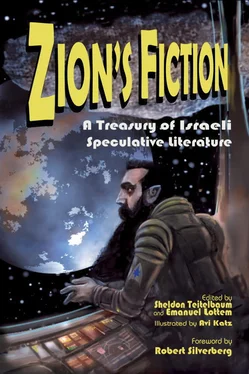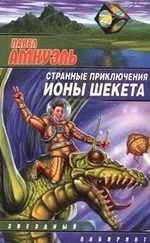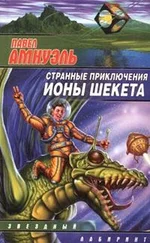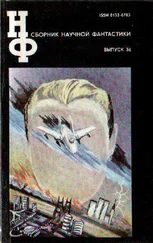The Internet provided an extremely useful tool in the service of genre proliferation. No longer did writers have to submit their creations for editorial consideration; they could publish themselves, either on their own blogs or on any one of several dedicated websites. The most outstanding one, Rami Shalheveth’s Bli Panica! (Don’t panic!), was inaugurated in 2001 and is still going strong.
As Haifa University’s Keren Omry reported in a paper published by the Science Fiction Research Association in 2013, the field has proved sufficiently fertile to attract and sustain academic attention. [28] Keren Omry, “SF 101,” Science Fiction Research Association Review 306 (Fall 2013), retrieved from author’s website.
Each of Israel’s public universities currently offers survey courses on speculative literature, both of the foreign variety and increasingly of the homegrown kind. The Department of English and American Studies at Tel Aviv University, for example, hosts a series of annual SF symposia. Students, meanwhile, have been awarded graduate degrees in this field from Israeli institutions, including at least one doctorate so far.
In 2009, moreover, Graff Publishing released Im Shtei haRaglayim Amok baAnanim (published in English as With Both Feet on the Clouds: Fantasy in Israeli Literature by Boston’s Academic Studies Press as part of its Israel: Society, Culture, and History series). Disregarding Ortsion Bartana’s more esoteric tome HaFantasia beSiporet Dor haMedina (Fantasy in literature of the statehood generation, 1986), as well as Rachel Elboim-Dror’s 1993 HaMachar Shel haEtmol (Yesterday’s tomorrow), Im Shtei haRaglayim Amok baAnanim was described by its editors as “the first serious, wide-ranging and theoretically sophisticated exploration of fantasy in Israeli literature and culture.” [29] Gurevitch, Gomel, and Graff, eds., “Introduction,” With Both Feet on the Clouds , 9.
It did not, however, address Israeli science fiction in a thorough manner, leaving room, we hope, for a companion volume.
“As the field grows richer,” writes Omry, “so too [do] the pleasure and insights the locally produced genre fiction provides, leaning less and less as of yore on Anglo-American themes, traditions, and locations and becoming more quintessentially and more complexly itself: Hebrew-language Israeli SF.” [30] Omry, “SF 101.”
What, then, do Israeli writers write about when they write speculative fiction? With some notable exceptions, many of them write about the end of all things. Or, to be more exact, all things Israeli.
“In Israel, even more than in any other society,” observes Baruch Kimmerling, “the past, present and future are intermingled; collective memory is considered objective history.” One important element of this commingling is the once universal belief, still held in certain religious circles, of “a miraculous, messianic return to the Holy Land at the apocalyptic ‘end of days.’” [31] Kimmerling, Invention and Decline, 16, 23.
Israelis must contend perennially with the contradictions presented by the secular messianism of the founders of their state (who subscribed to the notion that flaws and corruption in the world, and specifically “the Jewish situation,” must be replaced by a new order), and the unyielding, murderous, even exterminationist opposition espoused, overtly or otherwise, by many of their neighbors. They seek respite from these opposing impulses through the projection of prodigious military deterrence, through resort to nostalgia, and through perennial low-grade anxiety over potential apocalypse.
For Israelis, engagement in apocalyptic thinking is no mere fear mongering or neurosis. Just consider the Holocaust, which functions as a cogent engine for this activity. In Translating Israel , Alan L. Mintz extols the work of lauded author Aharon Appelfeld (1932–2018), whom he says “most unequivocally [took] the Holocaust as a field of imaginary activity,” that is, speaking of the unspeakable. [32] Alan L. Mintz, Translating Israel: Contemporary Hebrew Literature and Its Reception in America (Syracuse, NY: Syracuse University Press, 2001), 50.
Mintz asserts, moreover, that “if messianism, even misplaced messianism, is the ‘positive’ paradigm of the Jewish apocalypse, the Holocaust, both as an event and as a symbol, is its negative pole.”
The notion of examining the extermination of two-thirds of European Jewry through the prism of SF/F may, as the late Israeli literary critic Gershon Shaked—a prominent figure among the gatekeepers mentioned above—once observed, seems grotesque. The fantastic, writes Gary K. Wolfe, “by its very nature violates the norms of realism that have dominated not only Holocaust texts but virtually the whole body of what has been received and taught as ‘serious’ literature for the past two centuries.” Yet some British and American novels, such as Len Deighton’s SS-GB , Philip K. Dick’s The Man in the High Castle , Harry Turtledove’s In the Presence of Mine Enemies , J. R. Dunn’s Days of Cain , and Jane Yolen’s The Devil’s Arithmetic , as well as Lavie Tidhar’s A Man Lies Dreaming , have done so innovatively, proving Shaked misguided, if not hidebound, though not as misled as those who argued that the only fitting response to the Holocaust was silence. [33] Gershon Shaked, “Facing the Nightmare: Israeli Literature on the Holocaust,” in The Nazi Concentration Camps (Jerusalem: Yad Vashem, 1984), 690; Gary K. Wolfe, “Introduction: Fantasy as Testimony,” in The Fantastic in Holocaust Literature and Film , edited by Judith B. Kerman and John Edgar Browning (Jefferson, NC: McFarland & Company, 2015), Kindle edition, loc. 137 of 4490.
If the Holocaust is to remain “a continuing confrontation with unimaginable evil,” adds Wolfe, it must “be reimagined for succeeding generations on their own terms.” Nonsurvivors find themselves at a particular disadvantage, since the Holocaust still remains, as Judith P. Kerman has observed, almost “too fantastic to contemplate.” Which is why almost every account reports refusal by so many European Jews to believe the specific and generally accurate warnings they had received, even as they were herded onto the trains that transported them to the death camps and into the gas chambers that awaited them. “When the real is so fantastic, what literary effects will succeed in making it credible, and in helping the reader comprehend its human meaning?” she asks. And Jews outside Nazi-dominated lands simply refused to believe that such a thing could take place at all. In July 1943, for example, a gentile refugee from Poland, Jan Karski, arrived in Washington, DC, and was interviewed by Justice Felix Frankfurter, perhaps the most prominent Jew in the United States at the time. After hearing Karski’s eyewitness report on what was going on in his homeland, Frankfurter said: “I am unable to believe what you have told me.” [34] Judith B. Kerman, “Uses of the Fantastic in the Literature of the Holocaust,” in Fantastic in Holocaust Literature and Film , loc. 325 of 4490. Felix Frankfurter quote from Stanford University News Service, News Release, March 7, 1995, http://web.stanford.edu/dept/news/pr/95/950307Arc5338.html .
The Holocaust was the first wholly industrialized genocide. Science fiction emerged as a response to industrialization and the impingement of science and technology on modern life. Nowhere has there been a greater travesty involving these three elements, bolstered, it should be noted, by the insidiousness of near faceless bureaucracy. It stands alongside the nuclear destruction of Hiroshima and Nagasaki as one of the elementally apocalyptic events of our time. Polish-Israeli author Mordecai Roshwald understood this intrinsically. So did firebrand Amos Kenan, who described future Holocausts in Shoah 2 (1975) and Block 23 (1996).
Читать дальше






